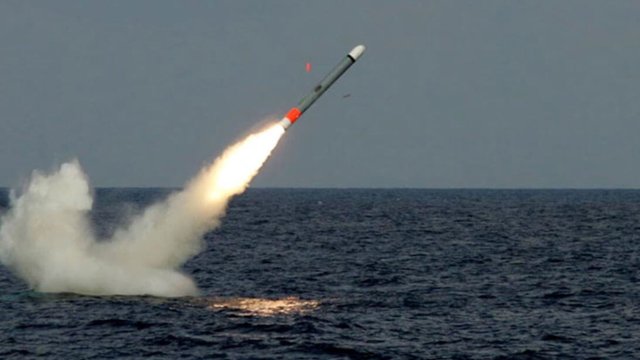Pentagon approves transfer of Tomahawk missiles to Ukraine, leaving final decision to Trump – media

The U.S. Department of Defense has given the White House the green light to supply Ukraine with long-range Tomahawk missiles, assessing that this will not have a negative impact on U.S. stocks, and leaving the final political decision in the hands of President Donald Trump, CNN reports, citing U.S. and European officials familiar with the matter.
"While the Pentagon doesn't have concerns about stockpiles, US defense officials are still grappling with how Ukraine would train on and deploy the missiles, officials said. There are still several operational issues that would need to be resolved for Ukraine to be able to use the missiles effectively," the statement reads.
One unresolved question is how Ukraine would launch the missiles if the United States provided them. Tomahawk missiles are most often launched from surface ships or submarines, but Ukraine's navy is severely depleted, so the missiles would likely have to be launched from land. The Marine Corps and Army have developed land-based launchers that could be provided to Ukraine.
But even if the United States were unwilling to provide launchers, European officials believe Ukraine could find a way around them. One official said Ukrainian engineers were able to devise a workaround to use Storm Shadow missiles provided by Great Britain, which were originally designed for use by modern NATO aircraft and were to be integrated into Ukraine's aging fleet of Soviet-era fighter jets.
The publication also recalled that earlier this month, during a working lunch with Ukrainian President Volodymyr Zelenskyy at the White House, Trump said that he would prefer not to provide the missiles to Ukraine because "we don't want to be giving away things that we need to protect our country." The Joint Chiefs of Staff informed the White House of their assessment earlier this month, just before Trump met with Zelenskyy, who insisted that the missiles be more effective at targeting oil and energy facilities deep inside Russia. The Tomahawk missiles have a range of about 1,000 miles. That assessment has supported the United States' European allies, who believe the United States now has fewer excuses not to provide the missiles, two European officials said. Trump also said just days before his meeting with Zelenskyy that the United States had "a lot of Tomahawks" that it could potentially provide to Ukraine.
Thus, the U.S. and European officials were surprised when Trump abruptly reversed course a few days later, saying during opening remarks at a White House working lunch with Zelenskyy that the United States "needs" the Tomahawks. He then told Zelenskyy behind closed doors that the United States would not provide them – at least not yet.
Trump's decision came a day after he spoke by phone with Russian President Vladimir Putin, who told Trump that the Tomahawks, which can hit major Russian cities like Moscow and St. Petersburg, would have little impact on the battlefield but would damage U.S.-Russia relations.
The White House and Pentagon did not respond to requests for comment.
As CNN previously reported, Trump has not completely ruled out the missiles, and the administration has developed plans to quickly supplies to Ukraine, if Trump gives the order. Trump has also been so frustrated in recent weeks with Putin's reluctance to seriously consider peace talks that he approved new US sanctions against Russian oil companies last week and has canceled a planned meeting with Putin in Budapest to discuss Ukraine for now.
CNN did not specify how many missiles Kyiv could receive.










